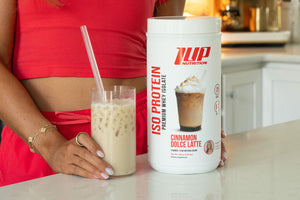 Sports nutrition, like working out, can be overwhelming in regard to what works and the information out there. The fitness world can be made up of two approaches: one of conformity where you do simply what everyone else is doing, or a totalitarianism one where you do simply what everyone tells you to do. In the thick of it all there is what YOU should do for YOU. When it comes to sports nutrition products and what has been proven to work for everyone, a vital product to incorporate in one’s “stack”, a knowledgeable fitness guru would agree, you should be taking amino acids.
Sports nutrition, like working out, can be overwhelming in regard to what works and the information out there. The fitness world can be made up of two approaches: one of conformity where you do simply what everyone else is doing, or a totalitarianism one where you do simply what everyone tells you to do. In the thick of it all there is what YOU should do for YOU. When it comes to sports nutrition products and what has been proven to work for everyone, a vital product to incorporate in one’s “stack”, a knowledgeable fitness guru would agree, you should be taking amino acids.
It does not depend if you are a bodybuilder, cross fitter, cross country runner, or just an athlete training for your respected sport, amino acids have their place in your sports nutrition regiment.
Branch chained amino acids (BCAAs) are a group of 3 essential amino acids: leucine, isoleucine, and valine. “Essential” means they cannot be made by the body, so therefore have to come from an outside source. This article will talk about the 3 essential amino acids that probably have heard of when one speaks of BCAAs.
Leucine is the primary BCAA, and this is where the most notoriety and benefit is given to. Leucine is the “big daddy” BCAA that helps promote protein synthesis, which is the signaling of the body to start rebuilding muscle. Leucine is so effective it can be supplemented on its own, but studies show there are more overall benefits to supplementing it as a mixture with the other BCAAs. On a BCCA product you will always see the “ratio”, this can be a 2:1:1 ratio or higher like our BCAA . The first number in that ratio is designated for the amount of leucine compared to the other two BCAAs.
Isoleucine is second on the list. It has a different primary function than leucine in which it helps with glucose consumption and uptake which in return helps with energy production. Some studies have shown as well that it can act as a anticatabolic agent (prevent muscle breakdown). Some studies show that it can also help out with protein synthesis, but not nearly as effectively as leucine.
Valine is the last on the list of the BCAAs. Valine has been known to assist in preventing muscle breakdown, but nowhere in the realm of isoleucine, and it can assist in protein synthesis, but it is not even in the same mention as leucine and is still weaker in that aspect than isoleucine.
BCAAs are found even in protein powders, but one must beware that these are digested differently than BCAAs that are bought by themselves. BCAAs are in a compound form in protein powders, which basically means they are not digested and broken down as easily by the body which in return restricts the body form using them to their complete effectiveness. BCAAs that are bough as a mixture by themselves are known as free form aminos that they body can digest and utilize much easier and quicker, which in return benefits the athlete. So, a protein powder might advertise amino acids, but it is recommended you still buy a mixture or free form product for maximum results.
These 3 BCAAs by themselves bring their own benefits to the table to an extent, but together they do much more, and when mixed effectively, they do even better.
Sure, if you are just interested in protein synthesis than you can supplement leucine alone or but just leucine, but why wouldn’t a person want something to help with glucose uptake and prevent muscle breakdown? All 3 complement each other.






